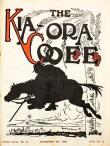 4948021649545698782.jpg
4948021649545698782.jpg
 4948021649545698782.jpg
4948021649545698782.jpg
'Australian scholars are now familiar with the tropes of the Anzac legend. This narrative describes the realisation of an Australian masculine identity, whose characteristics were forged on the Australian frontier and validated through the ordeal of battle. Though many writers contributed to this narrative, C.E.W. Bean, the official historian of the Australian Imperial Force during the First World War, is most closely associated with the popularisation of this myth, which fused frontier and martial masculinity into a national archetype.
'This article will examine the role of the slouch hat as a material and visual device that helped communicate the Anzac legend. While most of the scholarship that examines the construction of this narrative focuses on its articulation in prose, this narrative was also popularised through other media. Artists drew symbols of the frontier into their paintings while museum directors arranged their artefacts to support this narrative. This article will argue that the slouch hat provided an essential visual device to connect the narratives of frontier and martial masculinity through the image of the Australian soldier.' (Publication abstract)
'Australian scholars are now familiar with the tropes of the Anzac legend. This narrative describes the realisation of an Australian masculine identity, whose characteristics were forged on the Australian frontier and validated through the ordeal of battle. Though many writers contributed to this narrative, C.E.W. Bean, the official historian of the Australian Imperial Force during the First World War, is most closely associated with the popularisation of this myth, which fused frontier and martial masculinity into a national archetype.
'This article will examine the role of the slouch hat as a material and visual device that helped communicate the Anzac legend. While most of the scholarship that examines the construction of this narrative focuses on its articulation in prose, this narrative was also popularised through other media. Artists drew symbols of the frontier into their paintings while museum directors arranged their artefacts to support this narrative. This article will argue that the slouch hat provided an essential visual device to connect the narratives of frontier and martial masculinity through the image of the Australian soldier.' (Publication abstract)